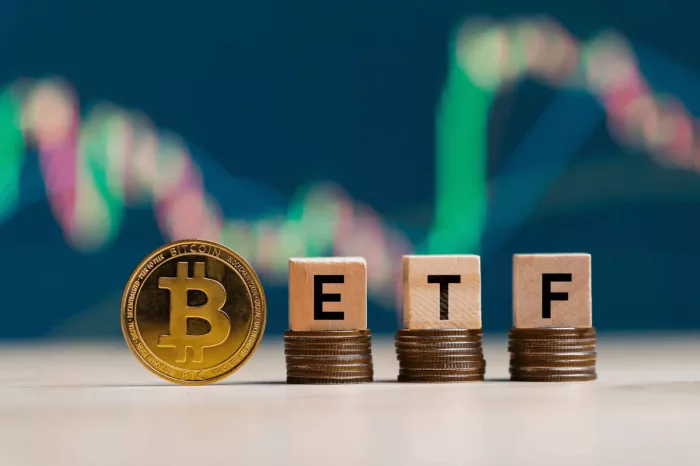U.S.-listed Bitcoin exchange-traded funds (ETFs) have made significant strides since their introduction in January 2024, accumulating tens of billions of dollars in assets and reaching over 50% of the holdings held by gold ETFs within just 10 months. This remarkable growth highlights the increasing mainstream interest in digital assets and raises important questions about the evolving landscape of investment strategies.
Rapid Accumulation of Assets
Since their launch, Bitcoin ETFs have attracted an impressive $23.89 billion in inflows, bringing total net assets to approximately $70 billion, according to data from SoSoValue. In stark contrast, gold ETFs, which have been in existence for nearly two decades, currently hold a total of $137.3 billion in net assets, as reported by the World Gold Council.
Nate Geraci, president of The ETF Store, emphasized the significance of this achievement on social media, noting that Bitcoin ETFs have amassed over 50% of the assets of gold ETFs in a remarkably short time frame. The rapid adoption of Bitcoin ETFs signals a shift in investment preferences, with many investors now considering digital assets as viable alternatives to traditional safe-haven assets.
Record Inflows and Market Interest
The influx of capital into Bitcoin ETFs reflects a growing interest in digital currencies, with daily inflows recently ranging from $192 million to as high as $893 million. Ryan McMillin, chief investment officer at Merkle Tree Capital, noted the overwhelming positive reception of Bitcoin ETFs, stating, “There is no question that the BTC ETFs have been well received, breaking all inflow records as they go.”
In contrast, gold ETFs, which first launched in 2004, have long been regarded as a stable hedge against market volatility and inflation. McMillin pointed out that while direct comparisons between the two assets may be challenging, the context of their respective launches plays a crucial role in understanding their growth trajectories. “It is hard to compare absolute flows as 20 years between launches include a lot of inflation,” he remarked.
Safe Havens: Gold vs. Bitcoin
Investors often consider Bitcoin and gold in light of their roles as “safe havens.” Gold has historically been prized for its stability and long-standing position as a store of value. In recent years, however, Bitcoin has emerged as a digital counterpart, benefiting from its limited supply and independence from traditional financial systems.
Jurrien Timmer, director of Global Macro at Fidelity Investments, has referred to Bitcoin as “exponential gold.” This characterization emphasizes Bitcoin’s rapid adoption and its inherent scarcity, suggesting that its value proposition transcends that of traditional gold. Timmer’s perspective highlights the potential of Bitcoin as a store of value, driven by network growth and limited availability.
Performance Comparison: Bitcoin vs. Gold
Bitcoin has established itself as the best-performing asset of 2024, rising 65% year-to-date to reach a price of $69,533. In comparison, gold has also performed well, with prices increasing by 16% to $2,746.09 per ounce. These trends suggest a changing landscape in the investment world, where digital assets are gaining traction alongside traditional commodities.
Despite recent volatility in the market, which saw Bitcoin experience a dip of more than 4% on Thursday, McMillin remains optimistic about Bitcoin’s potential for a strong year-end finish. He speculated that the recent sell-offs could be attributed to larger funds rebalancing their portfolios or taking profits. “We’ve seen a few sell-offs, which could be larger funds reweighing their portfolios to take some gains, or it could very likely be a little volatility as we get closer to the US election,” McMillin stated.
Market Outlook: What Lies Ahead
Looking forward, McMillin expressed cautious optimism, suggesting that any further declines in Bitcoin’s price would likely require a significant catalyst. “I wouldn’t expect we go much lower here, not without a serious catalyst,” he explained. This statement underscores the resilience of Bitcoin in the face of market fluctuations and highlights the ongoing interest among investors.
The landscape of investment continues to evolve, with Bitcoin ETFs providing a compelling alternative to traditional assets like gold. As digital assets gain popularity, the implications for investors and the broader market remain significant.
Conclusion
The emergence of Bitcoin ETFs has transformed the investment landscape, accumulating over $70 billion in assets within a year and surpassing 50% of the holdings of gold ETFs. This rapid growth illustrates the increasing acceptance and interest in digital assets, signaling a potential shift in how investors view safe-haven assets. With Bitcoin outperforming gold in 2024, the future of investment strategies may be on the verge of significant change as more investors consider the benefits of both traditional and digital assets.
As the market continues to evolve, keeping a close eye on these trends will be essential for investors looking to navigate the complex world of finance. The interplay between Bitcoin and gold as competing stores of value will likely shape investment strategies for years to come.
Related topics:

